Variety's 10 Animators to Watch: 'Inside Out 2,' 'Transformers One'
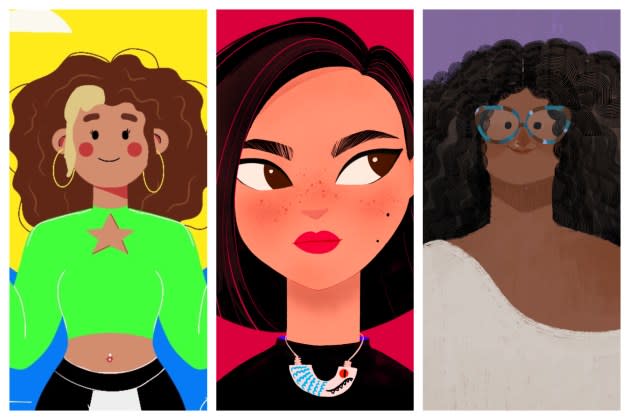
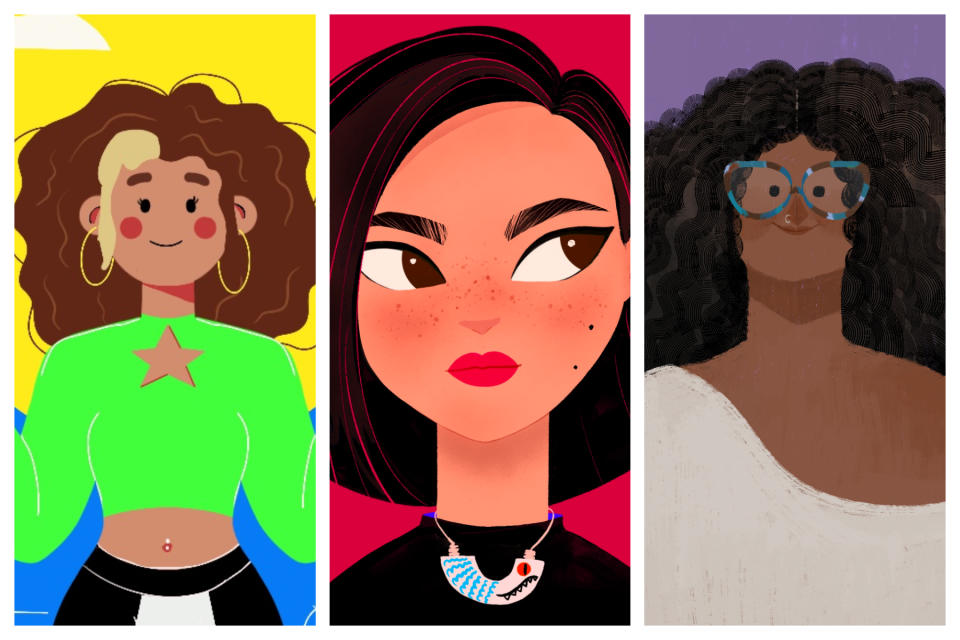
Animation is frequently misunderstood as a genre (it’s a medium) or dismissed as children’s entertainment (it’s made, and watched, by people of all ages). Yet there’s more of it now to disprove those reductive assessments than ever before — not just the accumulation of decades of trailblazing and diverse work, but new narratives being told in different ways to a multitude of audiences. Variety’s 2024 Animators to Watch are at the forefront of that eclectic and fruitful wave of creators, combining their life experiences and knowledge of the art form to craft characters and stories that are captivating, thought-provoking and moving.
More from Variety
'Inside Out 2' Helps Imax Beat Wall Street's Quarterly Earnings Projections
'Inside Out 2' Surpasses 'Frozen 2' as Highest-Grossing Animated Film in History
As has become an annual tradition, Variety asked each honoree to create a self-portrait to run in this feature. This year’s animators come from the world of film (“Inside Out 2,” “Ultraman: Rising”), television (“Sex Is Weird,” “Jentry Chau vs. The Underworld”), music videos (Ty Dolla $ign, Kanye West, FKA twigs and Skrillex’s “Ego Death,” Dua Lipa’s “Hallucinate”) and more. These animators all drew upon their upbringings, inspirations and life experiences to earn a spot among the most promising voices in the next generation of their industry. Variety is proud to recognize and honor the 2024 class of Animators to Watch as they give vivid life on screen to their imaginations — and as a result, to those of their viewers as well. — Todd Gilchrist
Ashley Boddy
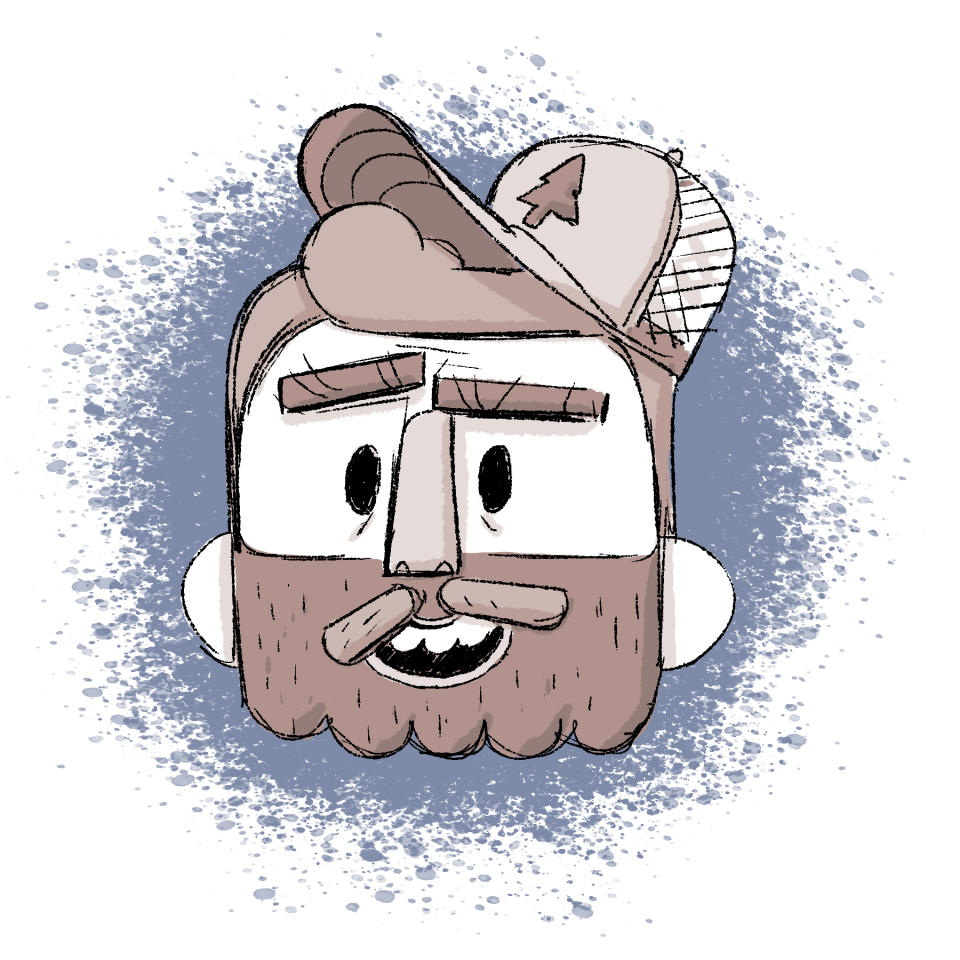
“That Christmas”
As head of story for Locksmith Animation’s Netflix-funded feature “That Christmas,” Boddy enjoyed collaborating with filmmaker Richard Curtis — whose children’s books the film is based on — and a small, dedicated story crew to create visual sequences that work whether the characters are talking or not. “If I don’t know what’s going on when the dialogue isn’t there, then we need to start working on it again, so everything helps each other along,” he says.
A career in animation seemed inevitable for Boddy, who spent his formative years in Hong Kong and won his school’s Christmas card drawing competition at age 6. Inspired by VHS tapes of “ThunderCats” and “Teenage Mutant Ninja Turtles,” he spent his adolescence making stop-motion videos of Lego figures before studying in England at Arts University Bournemouth. After graduation, Boddy landed an internship at Aardman Animations, where, as senior story artist on the “Shaun the Sheep” animated series, he won the 2017 Emile Award for Best Storyboard in a TV/Broadcast Production and worked alongside legendary animator Peter Lord and the Oscar-nominated feature “Pirates! Band of Misfits.”
After a decade at Aardman, Boddy moved to Locksmith, where he assumed the role of head of story on the company’s debut feature, “Ron’s Gone Wrong.” Now in Los Angeles, Boddy is head of story for Netflix’s adaptation of “Charlie and the Chocolate Factory.” “The room is starting to get really energetic now with people throwing in a lot of ideas. It’s going to be something that people won’t expect from ‘Charlie and the Chocolate Factory.’” — Paula Hendrickson
Katy Fishell
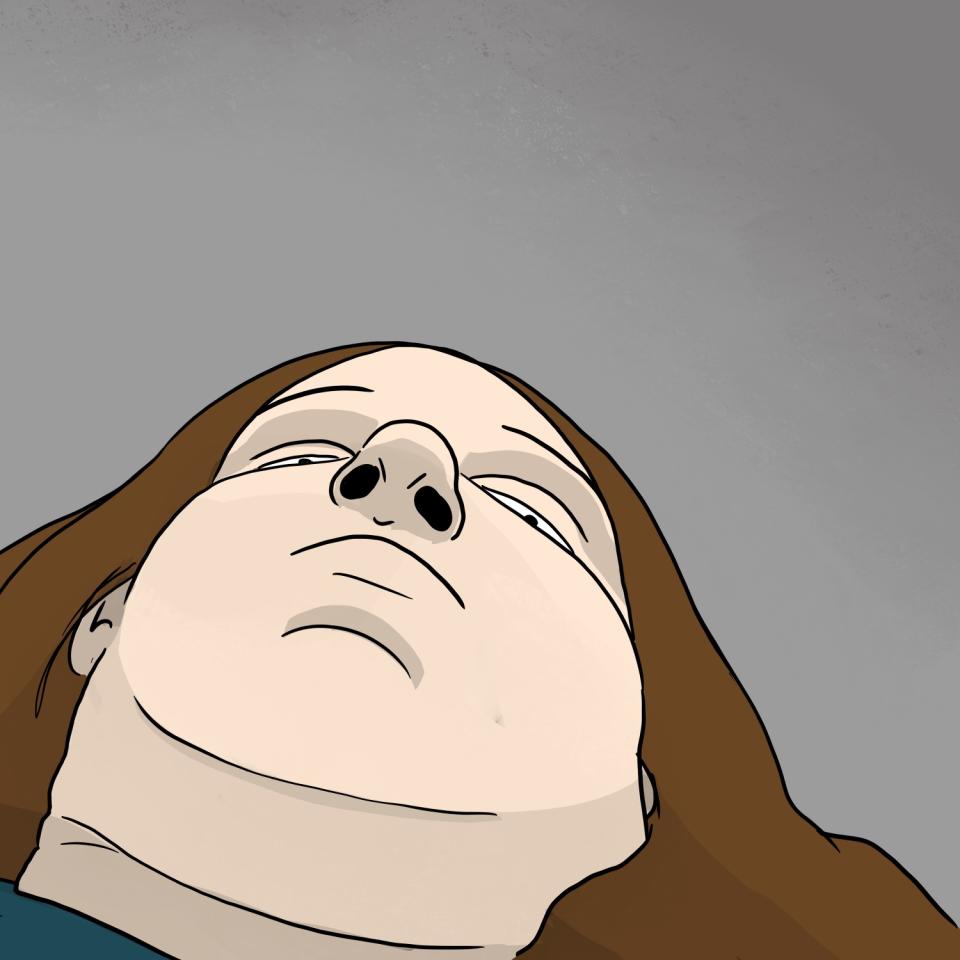
“Sex is Weird”
Los Angeles-based Fishell is a relative newcomer to the animation world. She recently sold Penguin Random House her memoir “Sex Is Weird,” a graphic novel based on the Instagram account of the same name that launched her into social media orbit and is working with Netflix on an animated series based on it, co-produced by Mike Judge and Greg Daniels.
After initially embarking on a career as a stand-up comedian, Fishell discovered that irreverent cartoons were a better platform to showcase her comedic instincts. Stand-up “wasn’t my strong suit, but I experienced the immediacy of whether or not a joke worked,” she says, while animation “allowed me to see how I could use a different format to accomplish my creative goals.”
When she moved to Los Angeles in 2018, Fishell started filling up a sketchbook with little drawings, most of them sex and body related. She quickly realized she was on the right track after she started showing them to friends to see what reaction they’d provoke. “A friend of mine thought they were very funny and emotionally direct, and I saw how what I was doing might reach a wider audience,” Fishell recalls. “I put them online, and I was shocked by what the response was — it was very immediate.”
Fishell subsequently charted a more direct course for herself as an artist, slowing her output on Instagram while moving into animation that was a bit edgier. Finally on more confident footing in her creative path, she’s enjoying work on her animated series. “I spent many years thinking I wasn’t capable or good enough,” Fishell admits. “But when you create something raw and beautiful, that sense of self-expression can be incredible.” — Nick Clement
Heidi Jo Gilbert
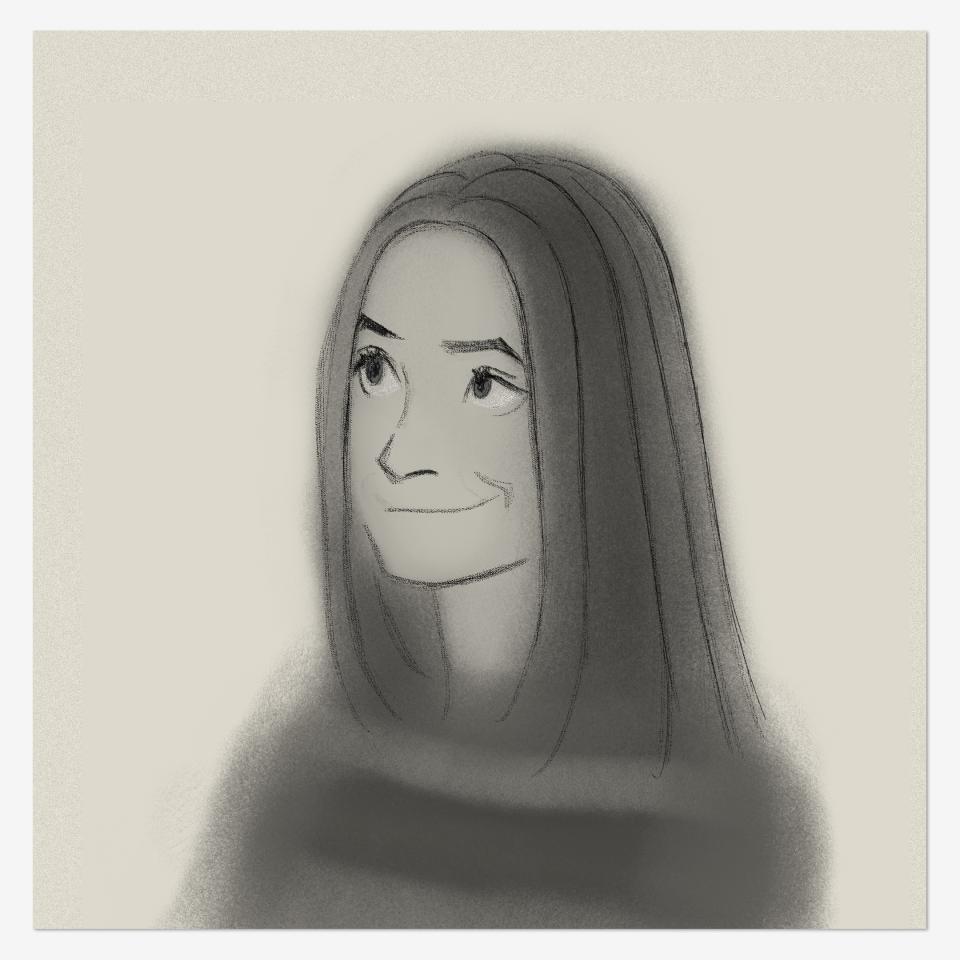
“The Wild Robot”
As head of story for the first time on “Puss in Boots: The Last Wish,” Gilbert experienced a full circle moment when the DreamWorks Animation project received a best animated feature Academy Award nomination. Though she started her career as a storyboard artist on series such as “Kung Fu Panda: Legends of Awesomeness” and “Dragons: Race to the Edge,” she was drawn from an early age to the storytelling side of animation. “There’s something about the filmmaking, the storytelling that I really wanted to try and do.”
Like many in her field, watching Disney films as a kid set Gilbert on a path to working in the medium — once she learned it could be a job, that is. “The movie that made me realize it was a job people did was ‘One Hundred and One Dalmatians,’” she says. “I was obsessed with that movie as a kid and was shocked when my mom said people draw those movies.”
Following her role on “Puss in Boots” with another head of story gig on Chris Sanders’ “The Wild Robot,” Gilbert explains that she considers it her responsibility to stress test a film’s narrative as it comes together. “I kinda look at my job as challenging the story to make sure that it’s what Chris wants.”
“The Wild Robot” became an especially personal project for Gilbert after her mother died during production, giving its story about motherhood cathartic weight. “I hope people feel that love and gratitude for mothers and the journey that they go on when watching the film,” she says. — Rafael Motamayor
Searit Kahsay Huluf
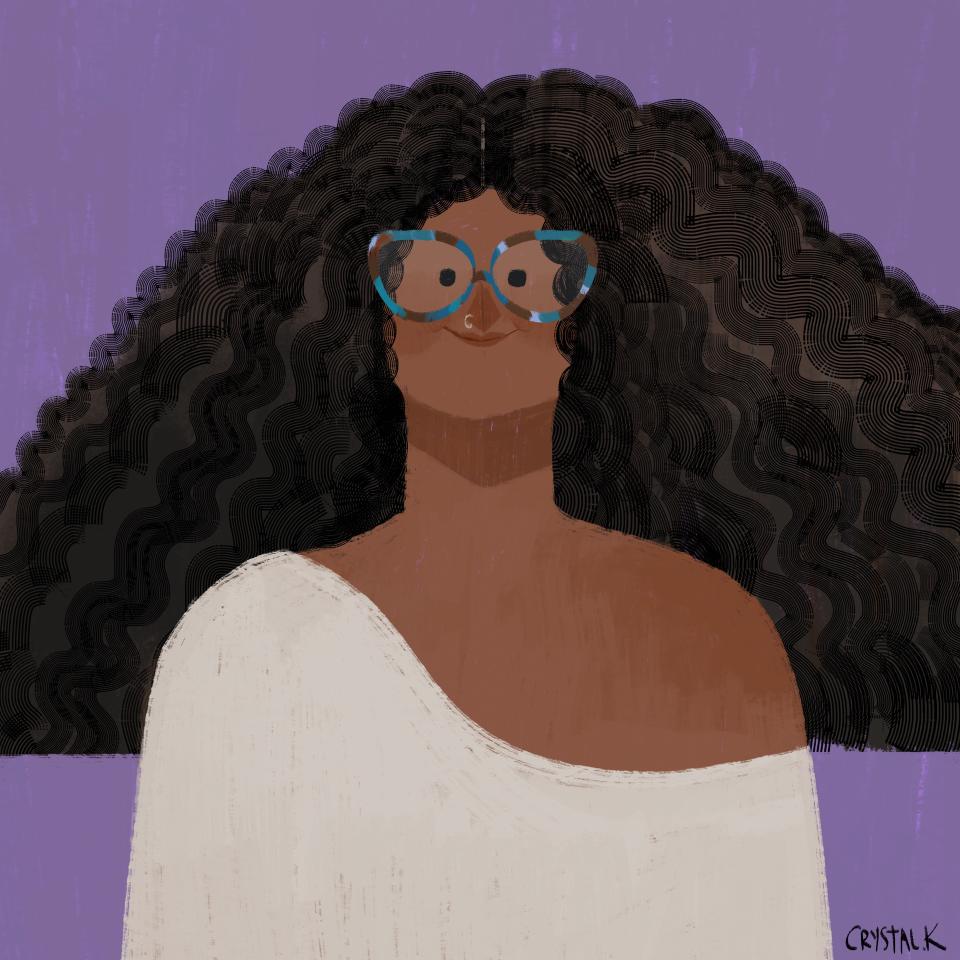
“Self”
For her stop motion Pixar short “Self,” Huluf was inspired by her life growing up as an Ethiopian immigrant in Los Angeles. “During multiple times of my life, I felt like I was singled out and I didn’t feel like I belonged,” she remembers. “I grew up poor. In high school, I wanted straight hair, but I had really thick, curly hair. I grew up on the Eastside, and on the Westside I was surrounded by white people.”
Those experiences fueled the idea at the center of “Self,” transforming it from a creative exercise into an opportunity for emotional catharsis. “I started playing games in my head: How much of myself can I hide in order to fit in? But then when I do that, I lose the sense of who I am and suffer the consequences of trying to be someone different. And that’s the story of my film,” she observes. “It’s a story of this woman who self-sabotages herself to belong.”
Choosing to animate the film — or at least its main character — in stop motion became key to the journey she takes. “The story is about someone who doesn’t belong, so not only does she not look and talk like everyone else, she’s also going to be animated differently from everyone else,” Huluf says. “She’s animated in stop motion, which is imperfect and choppy, while the other characters are smooth and chic, and they move flawlessly.”
Aspiring to be “the next Guillermo del Toro,” Huluf says she plans to work across multiple media. Her ambition is certainly worthy of the three-time Oscar winner: “I just shot a hybrid live-action animated short film last fall, and I’m currently writing a feature screenplay.” — Murtada Elfadl
Sunmin Inn
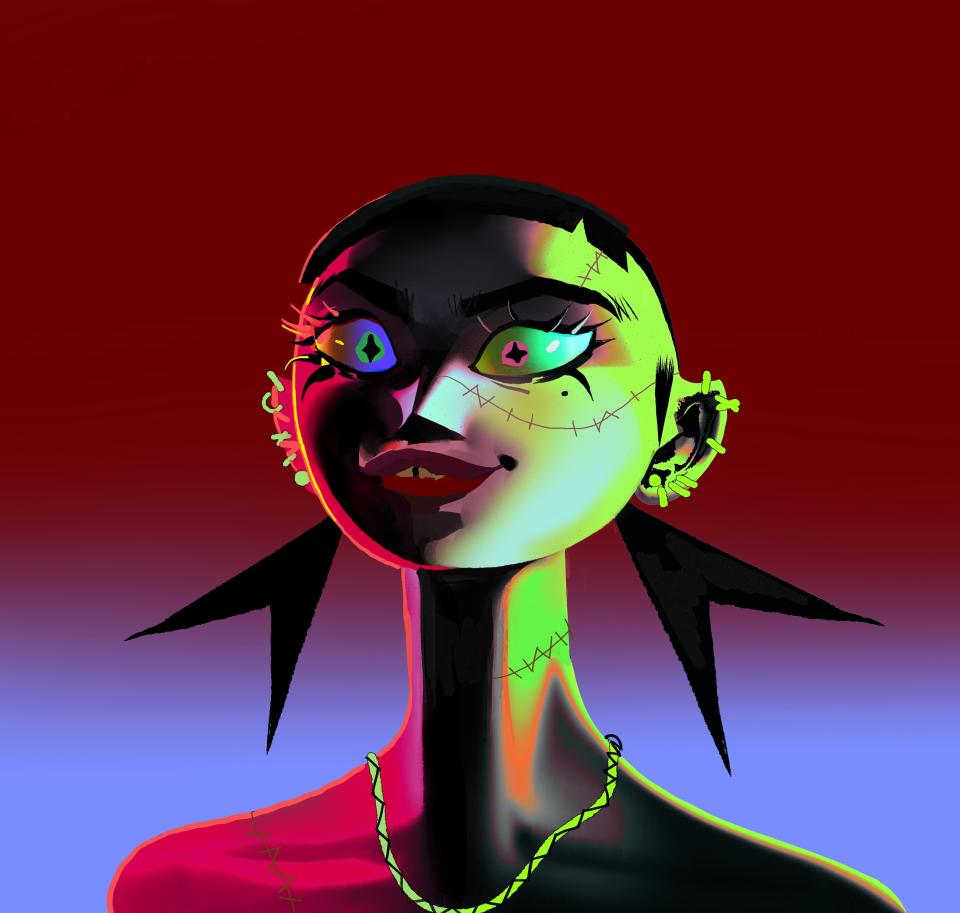
“Ultraman: Rising”
After working as a designer and as a visual development artist on movies such as “Storks,” “Vivo” and “The Magician’s Elephant,” Inn helped bring Ultraman to a whole new audience as art director on Netflix Animation’s “Ultraman: Rising,” a reimagining of the iconic Japanese superhero. Inn has always associated animation with the weird and the bizarre, starting with her realization, made while watching “The Ren & Stimpy Show” as a child, that people actually work in the medium. “My mind was breaking because I couldn’t understand it,” she says.
As Inn’s admiration for the art form expanded, series like “Aaahh!!! Real Monsters” and the puppetry of “The Dark Crystal” made the biggest impression on her emerging sensibilities. Stories that had darkness and were a bit twisted “built my sense of humor and aesthetic,” she says. Her work as a visual development and concept artist on projects such as “Storks” and “Vivo” allowed Inn to explore different looks and styles, and more broadly, to express herself unfettered by the eventual constraints of production. “It’s like the shiny thing, the exciting new thing,” Inn observes.
After helping bring Ultraman to life in a bold new way, Inn hopes to inject more of her unconventional sensibilities into future animated projects, particularly those aimed at the kind of impressionable children that she once was. “One thing that I’m super interested in is bringing back that horror aspect,” Inn says, recalling how movies like “The Dark Crystal” navigated more serious and even frightening material without overwhelming their all-ages audiences. “I know it’s scary, but it helps kids overcome real fear in a safe environment.” — R.M.
Emonee LaRussa
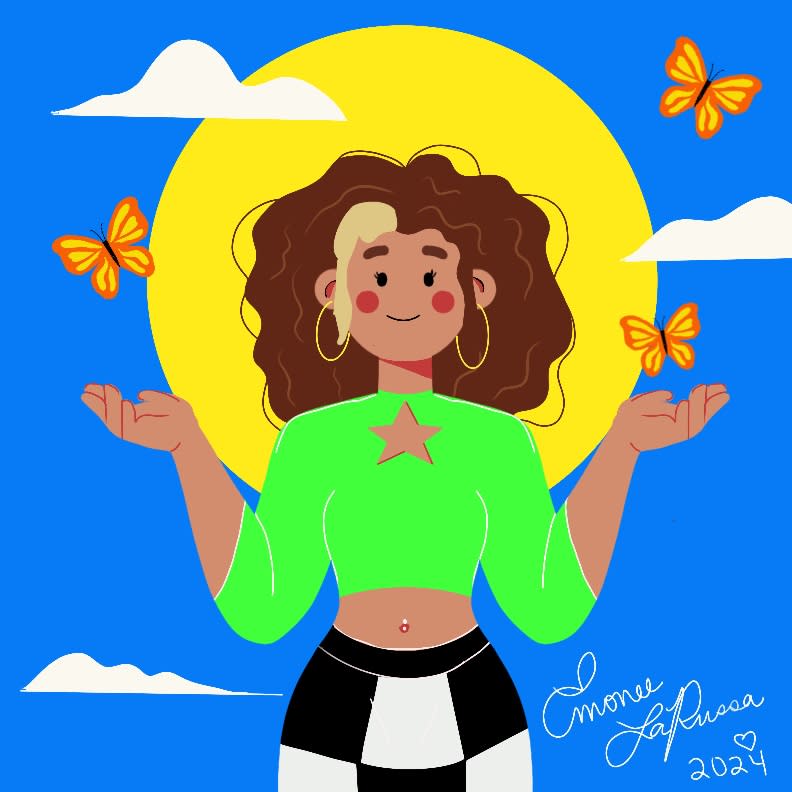
SuperBowl LVIII
As the founder and CEO of her own company, motion graphic artist LaRussa has made a name for herself via collaborations with both top-shelf brands (Adobe, Intel) and superstar music artists (Kanye West, Lil Nas X, Her, Megan Thee Stallion).
As a child, LaRussa loved both watching and making music videos (“I’m sure if you scour YouTube, you’d be able to find a video of me and my sister dancing to ‘Candy Shop’ by 50 Cent”), and high school film classes further shaped her visual sensibilities. Initially interested in cinematography while studying at Art Institute of Sacramento, LaRussa found herself drawn toward after-effects and motion graphic animations, which enabled her to indulge a keen eye for composition while also affording a higher degree of singular control.
Hired out of school in 2015 for not one but two separate positions at CBS, LaRussa rekindled her love of celebrating music visually while working for four years at the news organization. Some personal work on the side led to her being discovered by Columbia Records, and within a few weeks, she was doing full-time work animating lyric videos and content graphics for a stable of big-name stars. That same year, LaRussa founded Pamanama Studios, which takes its moniker from a childhood nickname bequeathed by her grandfather.
A self-described stylistic chameleon who goes through periods of intense reinvention, LaRussa feels cultivating the ability to speak many different creative languages helps her connect with both brands and other artists. “To me, it’s always an existential crisis, but to clients it shows versatility, so that’s always great,” she says. “I love one-on-one conversations, and I think a big reason why I am where I’m at today is my ability to communicate. I take a lot of pride in that.” — Brent Simon
Keiko Murayama
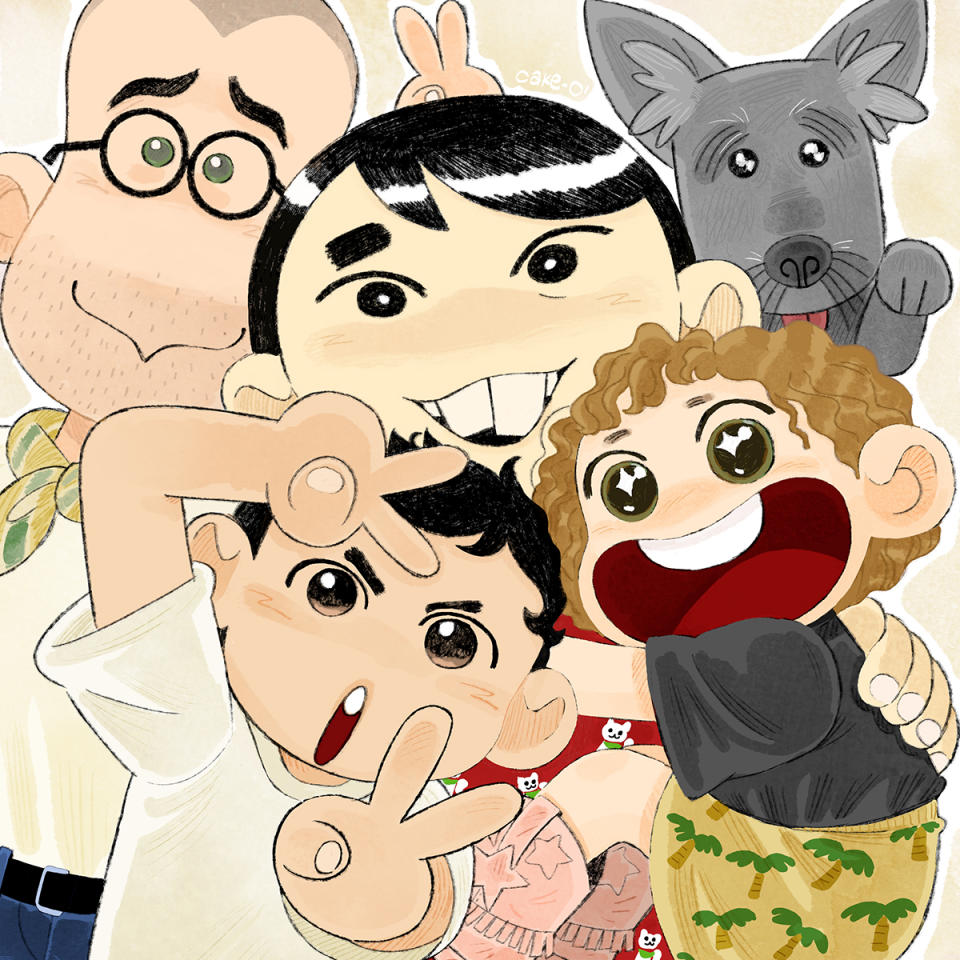
“Inside Out 2”
As character art director for Pixar’s “Inside Out 2” and Netflix’s “Ultraman: Rising,” Murayama’s work appears in two of 2024’s most high-profile animated projects. The work adds to an impressive line of credits that, despite her young age, already includes projects for companies like DreamWorks Animation, Disney Television Studios and Chromosphere LA.
Murayama grew up in Japan, where her mother fostered an early interest in animation by buying comic books and hiding them around the house for her to find. Still, it was only when Murayama came to the United States to study abroad that everything clicked. She fell in love with American cartoons such as “Samurai Jack” and transferred to Pasadena’s Art Center College of Design to pursue it as an occupational path.
Upon graduation, a spot in the Nickelodeon artist program led to a job at its animation studio, where she first served as a full-time background painter for “The Fairly OddParents.” More television work followed before Murayama was brought on board as a character designer on Pixar’s “Turning Red.”
Crafting characters based on story descriptions and then helping to translate 2-D designs into a final animated product, Murayama embraces the challenge of creating hundreds of iterations to get from “the ballpark to the pinpoint” of characters. “I’m really introverted but I also love observing people and then bringing that into the design,” she says.
While working on a children’s book in her personal time, Murayama is excited to continue her relationship with Pixar on a not-yet-announced feature. “I feel like everybody has a story, and if I can show a glimpse of that in my character design, that’s successful,” she says. “If somebody says, ‘Oh my god, I know this person,’ that’s the biggest compliment to me.” — B.S.
Jason Scheier
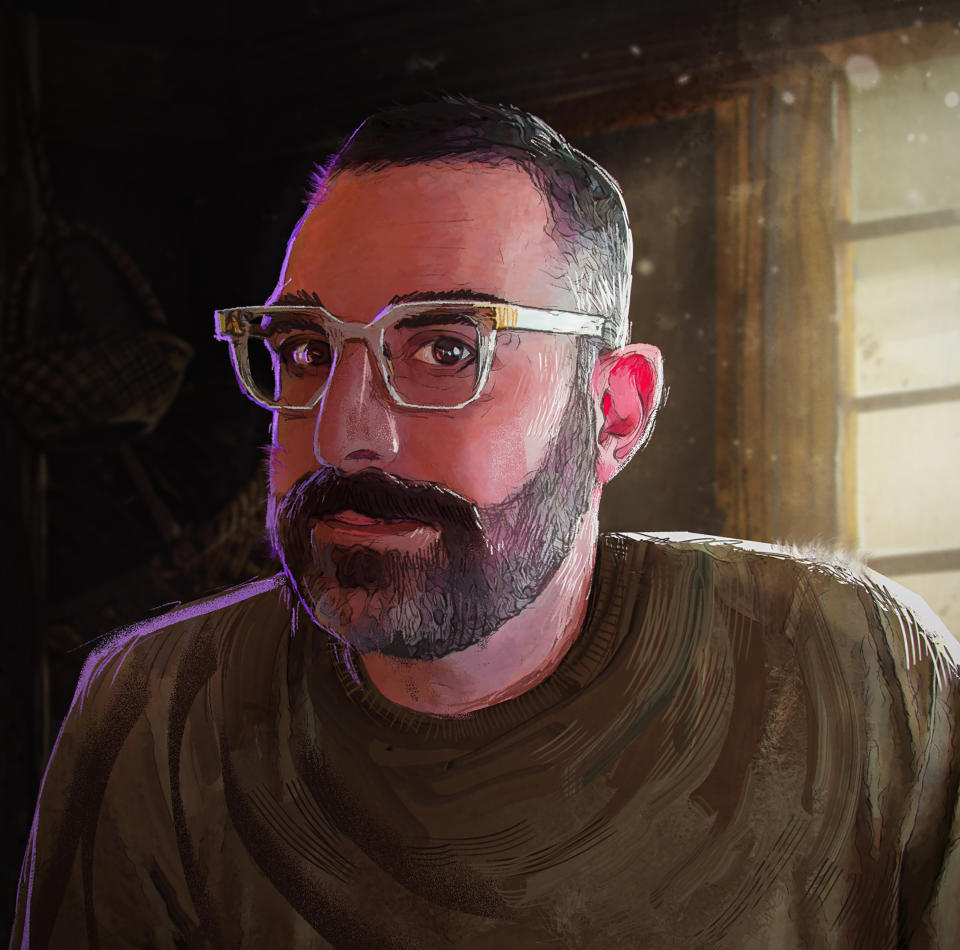
“Transformers One”
Scheier, who received his bachelor’s degree from the Art Institute of California, is a multitalented production designer, art director and instructor, and recently served as production designer on Paramount Animation’s “Transformers One.” Growing up in the 1980s helped cement his love for the iconic property. “I watched all four seasons of the original 1984 animated series, and I saw the animated film in theaters when I was 6 years old,” Scheier says. “It changed the way I looked at cartoons.”
Prior to “Transformers One,” Scheier was a production designer on the critically acclaimed “Blue Eye Samurai” for Netflix. With a resume that includes stints at DreamWorks Animation (“How to Train Your Dragon 2”) and Warner Bros. Animation (“Smallfoot”), as well as teaching roles at institutions like Art Center College of Design, Scheier excels in bringing bold and imaginative worlds to life. “As an animated production designer, I help to build the art department crew while working on schedules and budgets. One of the biggest early items is creating the aerial plan for all of the visual goals for the film,” he says.
Following seven mythology-dense live-action features in the franchise, “Transformers One” must separate itself from all that’s come before it. Scheier thrills at what he believes his team pulled off. “‘Transformers One’ is the first time we’re spending the entire narrative on the robots’ home planet
of Cybertron, so I spent a lot of time researching exotic metals from earth and space,” he explains. “We wanted the film to truly feel otherworldly for the audience.” — N.C.
Lisha Tan
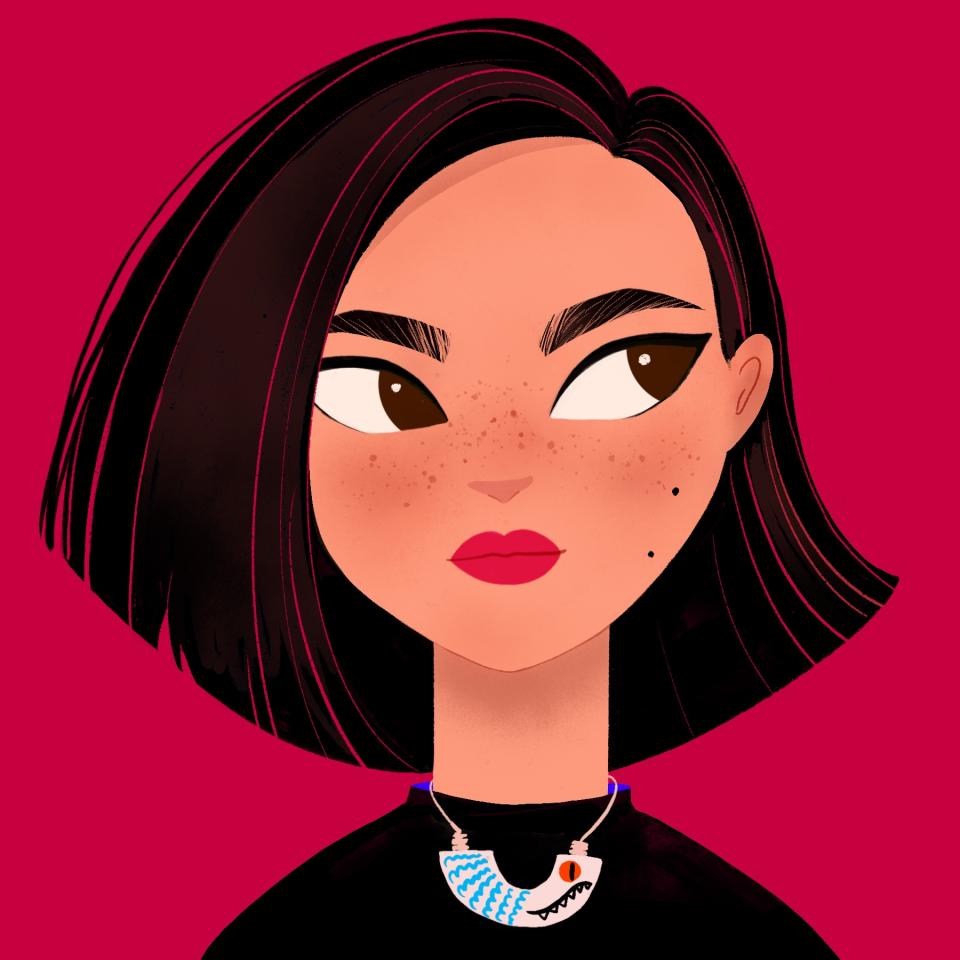
“Hallucinate”
Tan’s interest in animation, character and design started when she was a kid and a “huge gamer.” Though she agreed to study painting at the College of Fine Arts in Sydney to please her parents, she quickly transferred into the design and animation program, where she was drawn to projects involving game cinematics and high-profile music videos.
Working at Mill+ for the last decade, Tan has fulfilled many aspirations befitting her skill set: across a variety of cell and stop motion animation styles, she’s directed eight campaigns for Respawn Entertainment’s “Apex Legends” hero shooter game and helmed music videos for Jay-Z (“The Story of OJ”) and Dua Lipa (“Hallucinate”). “I like to bounce around,” she says.
“Cute and colorful” are the cornerstones of her work, so much so that when she’s not animating, she’s building her ceramics brand, Lil’Chotchke. “I found a new outlet in a different medium, which was really fun,” she says. Though down the line she envisions a kid’s book or an animated show inspired by her ceramic characters, Tan has put work projects on hold since last year, when she became a mother. “I’m a person who does everything a thousand percent, so I wanted to do the same thing as a mom,” she says, adding that she’ll return to Mill+ when her son starts preschool in the fall.
After working with Edgar Wright on the music video for Beck’s 2018 single “Colors,” Tan says she’d relish the opportunity to direct one of the artist’s clips herself. “I’d love to do more game trailers and more music videos,” she says. “I’m good at telling stories in bite-size pieces.” — Stuart Miller
Echo Wu
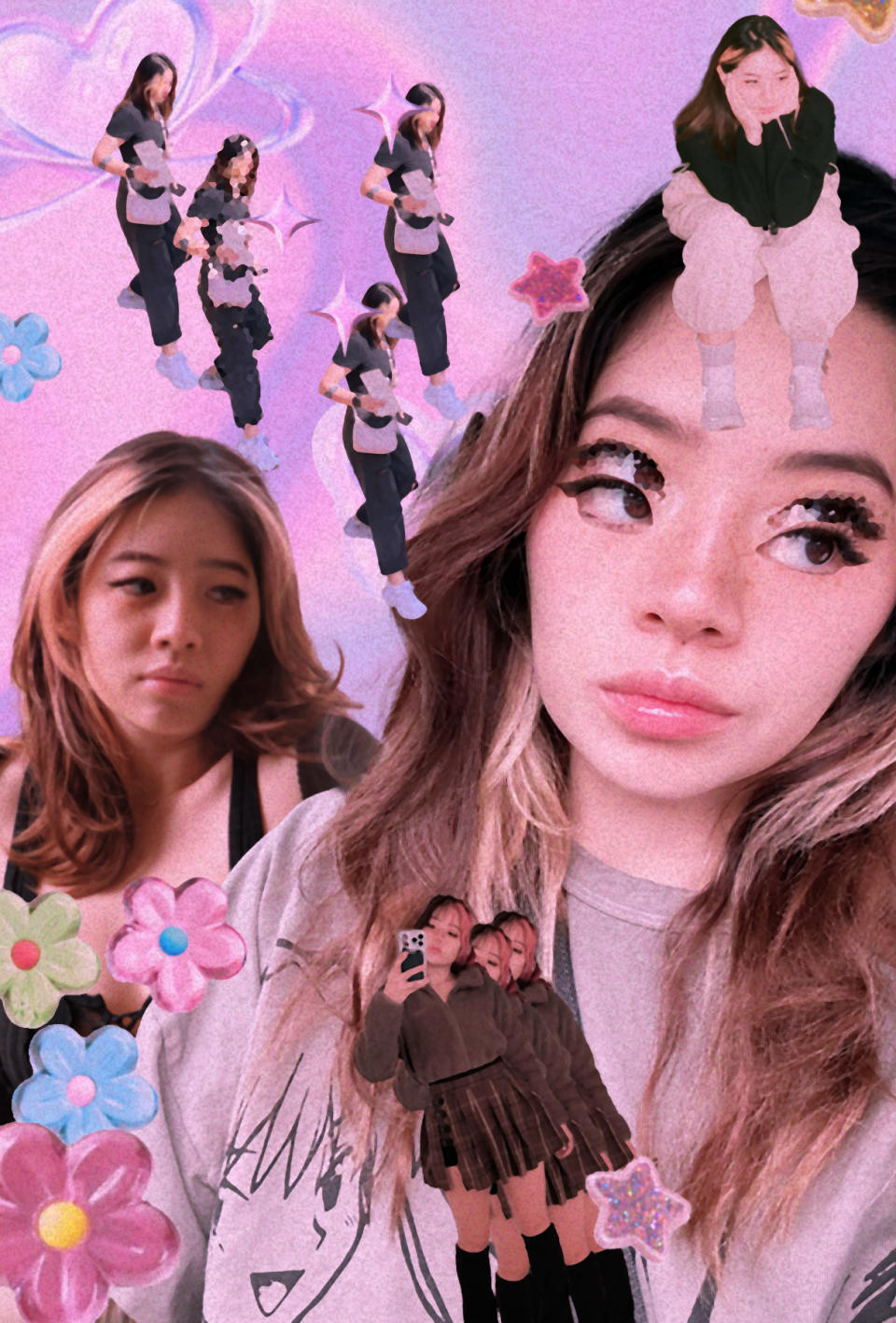
“Jentry Chau vs. The Underworld”
For first-generation Chinese American Wu, her interest in animation started as a method of communication. “I was struggling to perfect English and Mandarin at the same time, and my parents don’t speak much English. So pictures were a fun way to communicate with them.” Wu credits those formative experiences for making her storytelling visually inclined. “A lot of the DVDs that we had as a kid were Mandarin dubbed. I just watched mannerisms, so I definitely saw it as a visual medium more than anything.”
Wu further drew upon her childhood when developing her forthcoming Netflix show, “Jentry Chau vs. The Underworld.” “We have this phrase in the writers’ room that means sometimes finding yourself is like coming face to face with your own demons. ‘Jentry Chau’ is about taking that quite literally,” she says. “She’s fighting all these demons and monsters that are coming after her, but it’s a grounded story about how a teenage girl who has superpowers would deal with that.”
Wu hopes to expand her skill set beyond animation into live action. Before that, however, she wants to make a mark on the medium the way it did upon her so many years ago. “Every couple of years, especially in animation, things start to all look the same and to all tell the same stories. I want to emphasize a fresher take on things,” she says. “I’m so inspired by Gen Z culture and like their love of random humor and unhinged personalities, and that’s what I hope is reflected in my work.” — M.E.
Best of Variety


